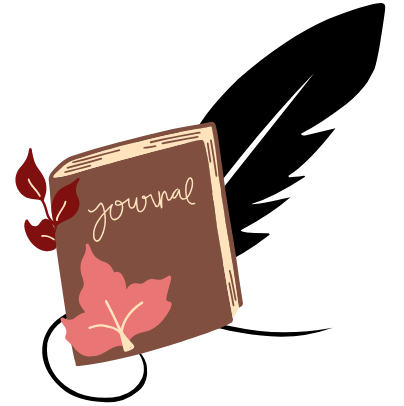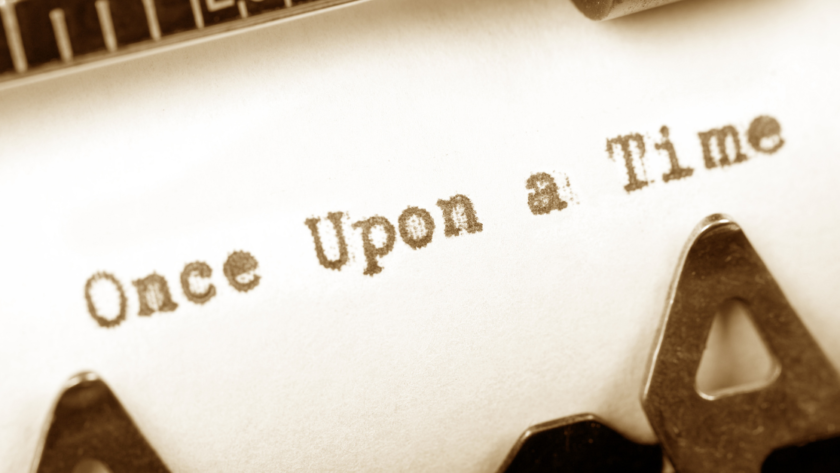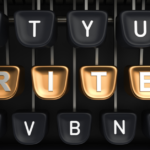As a writer who has crafted many short stories over the years, I’m thrilled to share my insights on the art of short story writing.
This guide will take you through every step of the process, from conception to final edit, helping you hone your skills and create compelling narratives that resonate with readers.
Understanding the Essence of Short Stories
Short stories are compact narratives that pack a powerful punch. They capture a moment, a character, or an idea in a concise yet impactful way.
Unlike novels, which allow for extensive world-building and character development, short stories demand efficiency and precision.
In a short story, every word must count, every sentence must propel the narrative forward, and every paragraph must contribute to the overall effect.
The beauty of this form comes from it’s ability to evoke strong emotions and leave lasting impressions in just a few pages.
Short story writing challenges authors to distill their ideas to their purest essence, creating narratives that linger in the reader’s mind long after the final word is read.
This condensed format needs a different approach to storytelling, one that emphasizes economy of language and sharp focus on a central theme or conflict.
Crafting Your Story Structure
While the traditional five-act structure (exposition, rising action, climax, falling action, and resolution) can be applied to short stories, it often needs to be condensed and adapted to fit the limited word count. Here’s how to approach structuring your short story:
1. Identify Your Core Conflict
Start by pinpointing the central conflict or idea that will drive your story. This will serve as the backbone of your narrative, guiding every scene and character interaction.
Your core conflict should be clear, compelling, and resolvable within the confines of a short story.
2. Introduce Your Protagonist Quickly
In a short story, you don’t have the luxury of pages upon pages to introduce your main character. Use vivid, specific details to bring your protagonist to life quickly.
Focus on the most essential aspects of their personality and situation that relate directly to the story’s central conflict.
3. Build Tension Efficiently
As you move towards the climax, focus on key moments that reveal character and advance the plot. Each scene should serve multiple purposes: developing character, building tension, and moving the story forward.
Eliminate any scenes or details that don’t contribute directly to your central narrative.
4. Craft an Impactful Climax
The climax of your short story should be powerful and transformative. This is the moment where the tension you’ve built throughout the story comes to a head.
Make it count by ensuring it’s emotionally resonant and directly tied to your protagonist’s journey.
5. Resolve with Subtlety
Short stories often benefit from resolutions that are satisfying yet open-ended. Provide enough closure to give your reader a sense of completion, but leave room for reflection and interpretation.
Sometimes, the most powerful endings are those that prompt the reader to continue thinking about the story long after they’ve finished reading.
Creating Memorable Characters
In short story writing, character development must be swift and impactful. Here are some techniques to create vivid, memorable characters within the constraints of the form:
Focus on Defining Traits
Instead of providing extensive backstories, zero in on one or two defining traits that encapsulate the essence of your character.
This could be a unique mannerism, a pivotal decision, or a revealing piece of dialogue.
By highlighting these specific details, you can create a strong impression of your character without extensive exposition.
Show Character Through Action
Let your characters’ actions and reactions reveal their personalities and motivations. Show how they respond to the central conflict of the story, and allow their choices to speak volumes about who they are.
This “show, don’t tell” approach is particularly effective in short stories, where every word counts.
Use Dialogue to Reveal Personality
Dialogue is a powerful tool for character development in short stories. Craft conversations that reveal your characters’ personalities, backgrounds, and motivations.
Pay attention to speech patterns, word choice, and what’s left unsaid – these details can provide rich insights into your characters.
Mastering the Art of Dialogue
Dialogue in short stories serves multiple purposes simultaneously. It can reveal character, advance the plot, create tension, and provide exposition – all while maintaining a natural, conversational flow.
Here’s how to make the most of dialogue in your short stories:
Keep It Brief and Impactful
In short story writing, every line of dialogue should serve a purpose. Avoid small talk or unnecessary exchanges that don’t contribute to the overall narrative.
Each piece of dialogue should reveal something about the character speaking, move the plot forward, or create tension.
Pay Attention to Rhythm and Cadence
The rhythm of your dialogue can significantly impact the pacing of your story. Short, punchy exchanges can create tension and urgency, while longer, more reflective conversations can slow the pace and allow for deeper character exploration.
Vary your dialogue rhythm to control the story’s pacing and emotional impact.
Use Subtext
Often, what’s not said is just as important as what is. Use subtext in your dialogue to add depth and complexity to your characters and their interactions.
This can create tension, reveal hidden motivations, and engage the reader more deeply with your story.
Setting the Scene
In a short story, the setting can play a crucial role in establishing mood, atmosphere, and context. However, with limited word count, you need to be strategic in how you describe your story’s world.
Here’s how to effectively set the scene in your short story:
Focus on Sensory Details
Instead of lengthy descriptions, use specific sensory details to immerse the reader in your story’s world. A well-chosen smell, sound, or texture can evoke a strong sense of place more effectively than paragraphs of description.
Select details that paint a picture and contribute to the story’s mood or theme.
Integrate Setting with Plot and Character
Use the setting to create obstacles, influence character decisions, or reflect the story’s themes. This integration of setting and story will make your narrative feel more cohesive and impactful.
The environment should be an active element in your story, not just a backdrop.
Use Setting to Establish Tone
The way you describe your setting can significantly influence the tone of your story. A gloomy, rain-soaked street sets a very different tone than a sun-drenched beach.
Choose setting details that reinforce the emotional atmosphere you’re trying to create.
The Importance of the Opening Line
In short story writing, your opening line is crucial. It’s your chance to grab the reader’s attention and pull them into your narrative world.
A strong opening can set the tone, introduce conflict, or pose an intriguing question that compels the reader to continue.
Here’s how to craft a powerful opening line:
Start with Action
Beginning your story in the middle of an action or event can immediately engage the reader. It creates a sense of urgency and prompts questions that the reader will want answered.
Introduce an Intriguing Character
If your story hinges on a compelling character, consider introducing them in your opening line in a way that highlights their uniqueness or conflict.
Pose a Question
Starting with a thought-provoking question can immediately engage your reader’s curiosity and draw them into the story.
Establish a Unique Voice
If your story has a distinctive narrative voice, showcase it in your opening line to immediately set the tone for your story.
Crafting a Satisfying Ending
The ending of your short story is just as important as it’s beginning. It needs to feel both surprising and inevitable – a delicate balance that can make or break your narrative.
Here are some techniques for crafting a satisfying ending:
Come Full Circle
One effective technique is to bring your story full circle, echoing elements from the beginning in a new context. This can create a sense of closure while also highlighting the character’s growth or the story’s central theme.
End on a Moment of Realization
Conclude your story with a moment of epiphany or change for your protagonist. This can leave the reader with a sense of the story’s impact beyond it’s final words, which can be particularly powerful in short stories.
Leave Room for Interpretation
Avoid the temptation to over-explain or tie up every loose end. Sometimes, the most powerful endings are those that leave room for interpretation, inviting the reader to continue engaging with the story long after they’ve finished reading.
Subvert Expectations
If you’ve set up certain expectations throughout your story, consider subverting them in your ending. This can create a surprising yet satisfying conclusion that challenges your readers’ assumptions.
Revision: The Key to Polished Prose
Once you’ve completed your first draft, the real work of short story writing begins. Revision is where you refine your prose, tighten your plot, and confirm every element of your story is working towards your intended effect.
Here’s how to approach the revision process:
Take a Step Back
After finishing your first draft, set it aside for a day or two before returning to it. This will allow you to approach your work with fresh eyes, making it easier to spot areas that need improvement.
Read Your Story Aloud
Reading your story out loud can help you catch awkward phrasing, unnatural dialogue, and pacing issues that you might miss when reading silently.
Check for Consistency
Ensure that your characters’ actions and motivations stay consistent throughout the story. Check that your setting details don’t contradict each other and that your story’s timeline makes sense.
Tighten Your Prose
In short story writing, every word counts. Go through your story line by line, cutting any unnecessary words or phrases.
Look for ways to convey the same information more concisely.
Strengthen Your Dialogue
Review your dialogue to confirm it sounds natural and serves a purpose. Each line of dialogue should reveal character, advance the plot, or create tension.
Refine Your Opening and Ending
Pay special attention to your story’s opening and closing. Make sure your opening line hooks the reader and your ending provides a satisfying conclusion to your narrative.
Get Feedback
Share your revised story with trusted readers or a writing group. Their fresh perspective can help you identify areas for improvement that you might have overlooked.
Exercises to Hone Your Craft
To improve your short story writing skills, try these exercises:
Write a Complete Story in 100 Words
This exercise forces you to focus on the essentials of your narrative. It challenges you to convey a finish story arc – beginning, middle, and end – in an extremely limited space.
This practice in concision can help you eliminate unnecessary elements in your longer stories.
Retell a Familiar Tale from a New Perspective
Take a well-known story – a fairy tale, a myth, or a classic novel – and retell it from the perspective of a different character. This exercise helps you practice voice and point of view, encouraging you to think about how different characters might perceive the same events.
Create a Story Based on a Single Sensory Detail
Choose a specific sensory detail – a smell, a sound, a texture – and use it as the foundation for a short story.
This exercise helps you develop your descriptive skills and create atmosphere, teaching you how to evoke a strong sense of place or mood with minimal details.
Write the Same Scene from Multiple Perspectives
Take a single scene and write it three times, each from a different character’s point of view. This exercise helps you understand how perspective shapes narrative, encouraging you to think about how different characters might interpret the same events based on their own backgrounds, motivations, and biases.
Condense a Longer Piece into a Short Story
Take a longer piece of writing – perhaps a chapter from a novel or a lengthy article – and condense it into a short story. This exercise helps you identify the core elements of a narrative and practice effective storytelling.
It challenges you to distill complex ideas or plots into their most essential components.
Key Takeaways for Short Story Writing
- Focus on a single event, character, or idea to maintain a tight narrative focus.
- Create a strong narrative arc with a clear conflict and resolution, even within the limited word count.
- Develop memorable characters through effective characterization, focusing on key traits and actions.
- Use dialogue to reveal character and advance the plot, ensuring each line serves multiple purposes.
- Set the scene with vivid, sensory details that contribute to the story’s mood and theme.
- Craft a compelling opening line that immediately engages the reader and sets the tone for your story.
- End your story in a way that feels satisfying yet leaves room for reflection and interpretation.
- Revise ruthlessly, ensuring every word serves a purpose and contributes to your overall narrative.
- Practice regularly, experimenting with different styles and techniques to find your unique voice.
- Read widely in the short story genre to learn from master storytellers and expose yourself to diverse narrative techniques.
People Also Asked
How long should a short story be?
Short stories typically range from 1,000 to 7,500 words, though some can be as short as 500 words or as long as 10,000.
The exact length often depends on the publication or contest guidelines if you’re submitting your work.
What’s the difference between a short story and flash fiction?
Flash fiction is generally even shorter than a short story, typically under 1,000 words. Some flash fiction pieces can be as brief as 100 words or even just a few sentences.
Short stories allow for more development of plot and character.
How do I come up with ideas for short stories?
Ideas for short stories can come from anywhere – personal experiences, overheard conversations, news articles, or even random prompts.
Try keeping a journal to jot down interesting observations or thoughts that could spark a story.
Can I make money writing short stories?
Yes, you can make money writing short stories. Many literary magazines pay for short story submissions, and there are also contests with cash prizes.
Some writers compile their short stories into collections for publication as well.
How do I submit my short story for publication?
Research literary magazines or online publications that accept short story submissions. Carefully read their submission guidelines, which will typically specify word count limits, preferred genres, and formatting requirements.
Many publications use online submission systems.
What’s the most important element of a short story?
While all elements of storytelling are important, in a short story, the character development and central conflict are often considered crucial. A compelling character facing a significant challenge can drive a powerful short narrative.
How do I improve my dialogue writing in short stories?
Practice writing realistic conversations by listening to how people actually speak. Read your dialogue aloud to check for naturalness.
Ensure each line of dialogue serves a purpose in your story, revealing character or advancing the plot.
What’s the best point of view for a short story?
There’s no single “best” point of view – it depends on your story. First-person can create intimacy with the narrator, third-person limited allows for focus on one character while maintaining some distance, and omniscient can provide a broader perspective.
Choose the POV that best serves your narrative.
How do I create tension in a short story?
Build tension by introducing conflict early, raising the stakes as the story progresses, and pacing your revelations carefully.
Use a mix of action, dialogue, and internal monologue to keep the reader engaged and wondering what will happen next.
What are some common mistakes in short story writing?
Common mistakes include trying to cram too much plot into a short format, neglecting character development, overwriting (using too many words to describe simple actions or scenes), and failing to edit thoroughly.
Also, having a weak opening or an unsatisfying ending can significantly impact a short story’s effectiveness.




